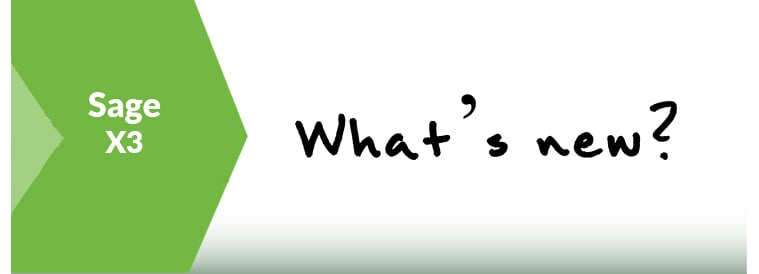There has been a lot of buzz about the transformation in Sage X3 to use some new technologies for their development and interface. After attending the Sage X3 Partner Summit in Dubai in April, it is exciting as a developer to hear direction they are going. This blog is a short summary of what is coming.
The path Sage is taking for Sage X3 development is to get away from the 4GL, and to move to the usage of open source technologies.
GraphQL
GraphQL is a query language and runtime for APIs. It provides a real time, responsive integration, and has an understandable description of the data tables in the request.
Sage has already provided a playground to learn the GraphQL language. This playground allows the developer to learn, query and review the technology using the SEED data provided in Sage Enterprise Management. From here, the developer can review query examples, review properties of the sales order object.
https://developer.sage.com/api/enterprise/graphql/using-graphql/
Want to learn more about GraphQL? Below is a helpful site to provide an overview of the language:
TypeScript
TypeScript is an open-source strongly-typed language developed by Microsoft, which compiles to JavaScript. Since it is strongly-typed, the developer can avoid a lot of the common errors encountered with JavaScript, which will now be caught in the TypeScript compiler. The language is object-oriented and allows for functional programming. While various editors can be used for TypeScript, a common editor is Visual Studio Code, which is a free editor from Microsoft.
Although there are many resources for TypeScript, below is a site to get started:
https://www.typescriptlang.org/
Development Studio
Sage will be coming out with this toolset to be used for development in the new open source technology space. This will replace the diction tools and use of Eclipse. It will provide one simple tool for changes to tables, code, etc. This will make it easier to use version control for all code changes, including source code, table dictionary changes, which was had to do in the previous technology. Development Studio will also be integrated with GIT. This tool will be available at a later time.
Add-Ons
One question many may have is, how does this new technology affect add-ons? Since it will be an object-oriented technology, customizing will be much easier. Instead of requiring changes to base Sage X3 object, it will be possible to create packages that extend the base packages, instead of changing them. This will make patches and updates easier.
Advantages
There are many advantages to this move towards open source technology. Aside from the many improvements in the responsiveness and design, there is also the advantage of attracting technical resources and training. While the 4GL is a proprietary language, which makes it harder to find experienced developers and to find training, the switch to more common open source technologies, such as TypeScript and GraphQL, will not only make it easier to find talented resources, but will also make training and development materials easier to obtain.
Availability
Most of these new technologies should be available in the cloud versions during the summer of 2019. The availability for the on premise version is not clear yet, but likely sometime in 2020.
Getting Started
Although this new technology will not be rolled out until summer 2019 for cloud versions, and 2020 for on-premises, developers can get a jump by learning GraphQL and TypeScript. Since these are popular open source technologies, there are many learning sites available on the internet.
IN CASE you missed these Sage X3 blogs:
How to Create Recurring Supplier Invoices in Sage EM
How to Setup a Default Site for Users in Sage EM
Global Serial Numbers Enhancement




